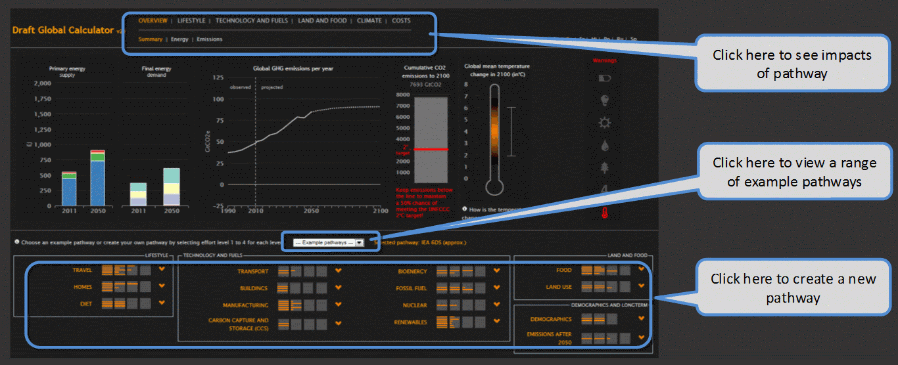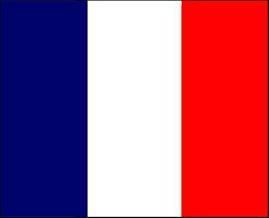Translate This Page
Anti-speciesism and climate change
There's a nifty little tool that enables you to see the effects of various actions on climate change. It's called the Global Calculator and it's available on-line here: http://tool.globalcalculator.org/
It's probably a good idea to open it in another tab now, so that you can see more clearly what I'm talking about...
After the introductory page you are presented with the "business as usual" (BAU) scenario: that's the one where we blithely destroy the environment by carrying on the way we are at the moment. There's an icon of a thermometer and if you hover over it with your mouse pointer it shows an estimated temperature global mean temperature change of between 1.9 and 6°C by 2100. This is most emphatically not good: we should be trying to keep the temperature change at less than 2°C.
Below the graphs and the thermometer you will see a number of boxes with yellow lines in them: the one that I would like you to take a close look at is on the bottom left and is called "DIET". When you click on the little arrow next to it, it expands to show three options that you can adjust individually. Let's take a look at the "Quantity of meat" option.
It's already on level 2.0 which, as you can see by hovering your pointer over it, means that the average person globally gets 220 kcal/day from meat. This is up from the 2011 estimate of 187 kcal/day.
Now click on the level 4.0 box, which corresponds to 14 kcal/day: the amount of meat consumed by the average Indian in 2011. The effect on global average temperature change is dramatic: it's now only 0.8 to 3.4°C compared to 1.9 to 6.0°C under the BAU scenario.
Quite simply, the lifestyle change that an individual in the developed world can make which has biggest effect towards combatting climate change is to give up eating meat.
You may be puzzled as to why this has such a large effect. The little "i" next to the "Quantity of meat" lever takes you to an explanation. Mainly, it's because eating meat is a very inefficient way of getting calories and proteins. The food that is given to animals is not all converted into meat: it's used for making their bones and their fur or feathers. They also use some of the food to keep alive and move around. At best, for every two calories fed to a chicken or a pig you get one calorie of meat. At worst, it can take fifteen or more calories fed to cattle to provide one calorie of meat.
All this extra food that has to be fed to animals comes with an environmental cost too, as more land has to be cultivated. Land use change is a big contributor to climate change: cutting down forests for pasture or cropland not only releases a lot of carbon dioxide, but also reduces the number of trees available to absorb carbon dioxide. By reducing the amount of food given to animals, we could allow the surplus pasture or cropland that is used to feed them to be used for biofuels or
for reestablishing forests, thereby reducing greenhouse gas emissions.
And all the excess food fed to animals leads to more waste products: their dung and their urine and the methane excreted by ruminants which is a very powerful greenhouse gas. In addition, you have all the energy expanded on looking after the animals, transporting them, killing them, refrigerating them, transporting bits of them to be sold etc.
Other consequences that are not taken into account in the Global Calculator are the effects on people's health of eating meat: cancers, diabetes, obesity, heart disease etc. All these have a cost to the economy as well through medical bills and lost productivity http://www.pnas.org/content/113/15/4146.full
By now the message should be clear. For your own health and the health of the environment: Go vegan!

- (Intensive) Animal farming and slaughter for meat/organs and other animal products like dairy products and eggs
- (Intensive) Animal farming (Mammals, Birds and Reptiles) for their skin (leather) and fur
- (Intensive) Animal farming for wool
- (Intensive) Goose farming for down
- Fishing and fish farming
- Circuses, Zoos and Marine Parks
- Animal testing and animals used in medical or veterinary universities
- Hunting, canned hunting and trophy hunting
- (Cruel) Animal Sports like bullfighting and other fiestas, cockfighting, horse racing, greyhound racing, sled dogs racing, pigeon racing, pig wrestling, rodeos etc.
- Pets
- Horse and pony riding
- The use of animals in films
- Zoophilia
- Anti-speciesism and climate change
- What can you do

